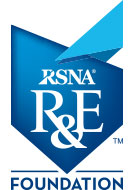Cloud-Based Imaging Tool Tracks Changes in Brain Tumors
Grant helps create software to make follow-up imaging more efficient


A cloud-based imaging platform allows radiologists, oncologists and other specialists to automatically and quantitatively track changes over time in a deadly type of brain tumor, potentially improving care for thousands of patients.
Routine follow-up MRI is important in the management of glioblastoma, a common and aggressive brain tumor that affects up to 20,000 new patients annually in the U.S. MRI can help show if treatment is working, but results are challenging to interpret because of reader subjectivity and overlap between treatment effects and tumor progression. Ineffective treatments are especially detrimental in treating a disease that, even with surgery, radiation therapy and chemotherapy, carries a poor prognosis.
“People with the most aggressive tumors typically survive for only a year or two,” said Brent D. Weinberg, MD, PhD, assistant professor at Emory University School of Medicine in Atlanta.
Dr. Weinberg has been studying ways to improve the outlook for these patients by leveraging the ample amount of data contained within brain MRIs.
With the help of a 2020 RSNA R&E Foundation Research Scholar Grant, he developed cloud-based imaging follow-up software that provides users with quantitative assessment of changes in brain tumors over time.
The platform, known as the Brain Imaging Collaborative Suite’s Longitudinal Imaging Tracker (BrICS-LIT), is intended to facilitate accurate and objective monitoring of patients during treatment follow-up. It correlates with an already implemented clinical scoring system developed by Dr. Weinberg, the Brain Tumor Reporting and Data System (BT-RADS).
“The goal is to develop clinical tools to longitudinally follow up people’s imaging more efficiently, quantitatively and precisely to help oncologists make the best decisions for their patients,” Dr. Weinberg said.
“The ultimate goal is to have this as a clinical tool available to anyone interpreting brain tumor imaging. It gives you a report that shows what the software believes is going on with the tumor. The radiologist and neuro-oncologist can then use it in conjunction with their clinical judgments.”
BRENT D. WEINBERG, MD, PHD
Tracking How Tumors Change Over Time
The inspiration for the project came from Dr. Weinberg’s colleague, Hyunsuk Shim, PhD, professor at Emory University School of Medicine. Dr. Shim’s groundbreaking research on glioblastoma involves using MR spectroscopic imaging techniques to quantitatively measure metabolic changes associated with early therapy response. As part of that research, she created web tools to make spectroscopic data more accessible to doctors.
“I saw from working with Dr. Shim that we had a clinical need for something similar to look at how the imaging is changing over time,” Dr. Weinberg said.
Building on the work of previous students in the lab, Karthik K. Ramesh, a PhD student in Dr. Shim’s lab, and Dr. Weinberg developed a platform that doctors can use to quickly see the imaging and determine if the tumor is getting better or worse. The platform helps reduce the variation inherent in subjective observations that come from readers with differences in training and experience.
In the years since the grant was awarded, Dr. Weinberg has made the BrICS-LIT platform more robust and has begun using it on data from clinical trials on brain tumor patients at Emory. As part of that process, the Emory researchers have built machine learning tools into the platform to automate processes such as the segmentation of tumors.
“The ultimate goal is to have this as a clinical tool available to anyone interpreting brain tumor imaging,” Dr. Weinberg said. “It gives you a report that shows what the software believes is going on with the tumor. The radiologist and neuro-oncologist can then use it in conjunction with their clinical judgments.”
R&E Foundation Grant Provides Valuable Research Time
Dr. Weinberg credits the RSNA grant for allowing him to devote more time to the development and study of BrICS-LIT.
“The grant was instrumental in providing time away from clinical service to focus on this research,” he said. “It’s drastically increased the amount of time I can spend on other projects.”
Research on BrICS-LIT continues and in the meantime, the platform is being used as a secondary tool in other clinical projects at Emory, Dr. Weinberg said.
For More Information
Learn more about R&E Foundation grants at RSNA.org/Research/Funding-Opportunities.
Read previous RSNA News stories about R&E Foundation grants: